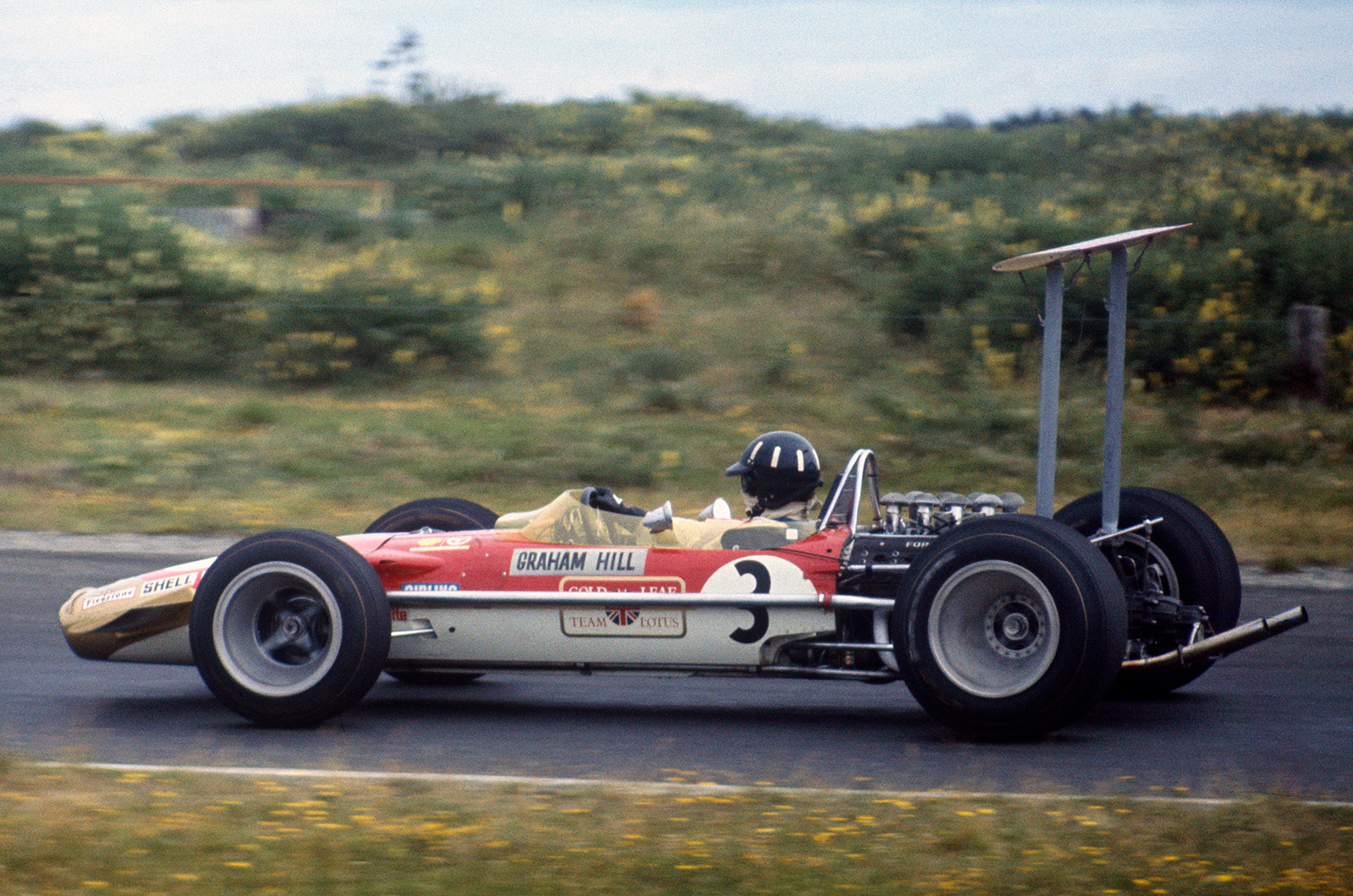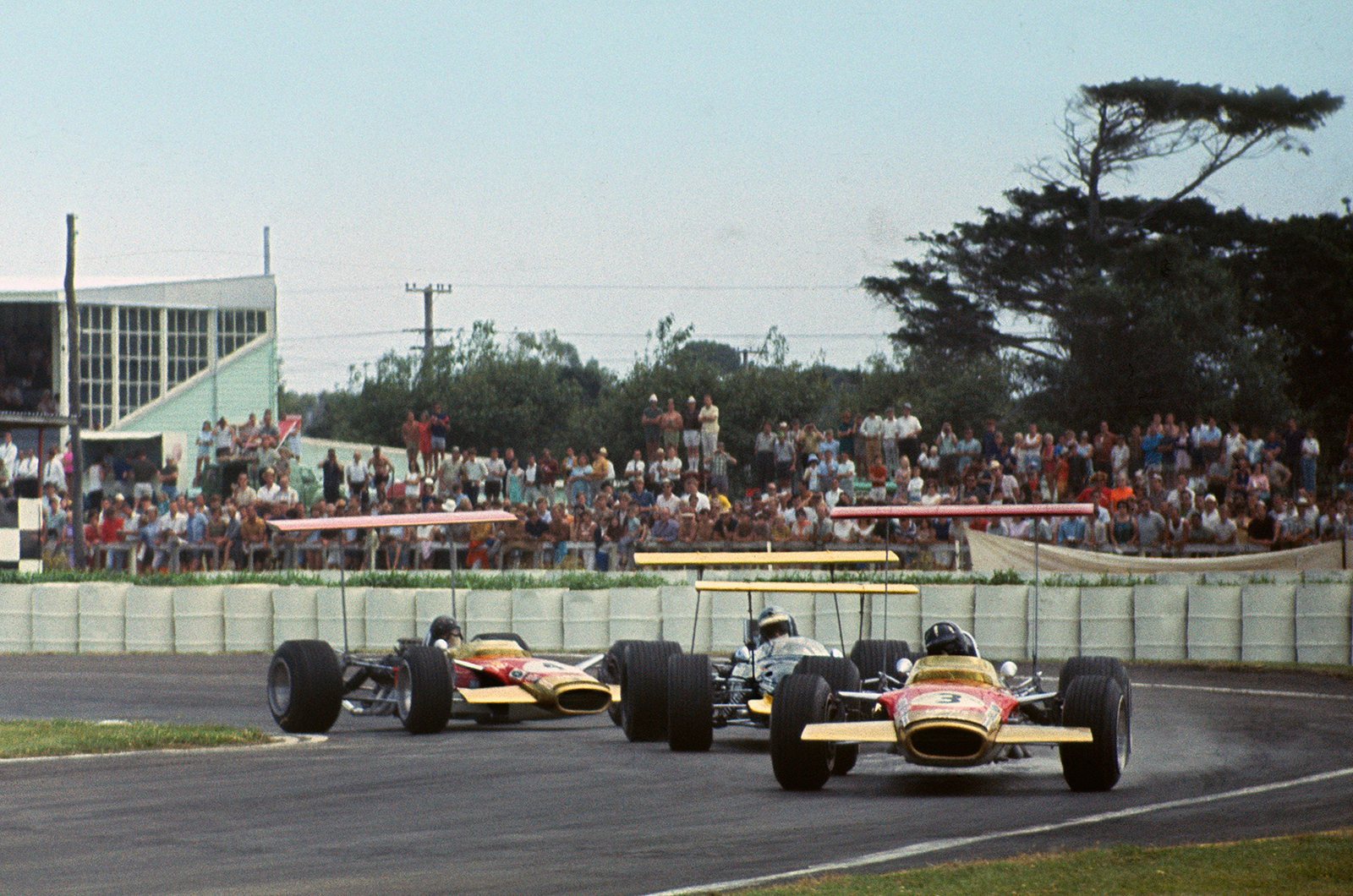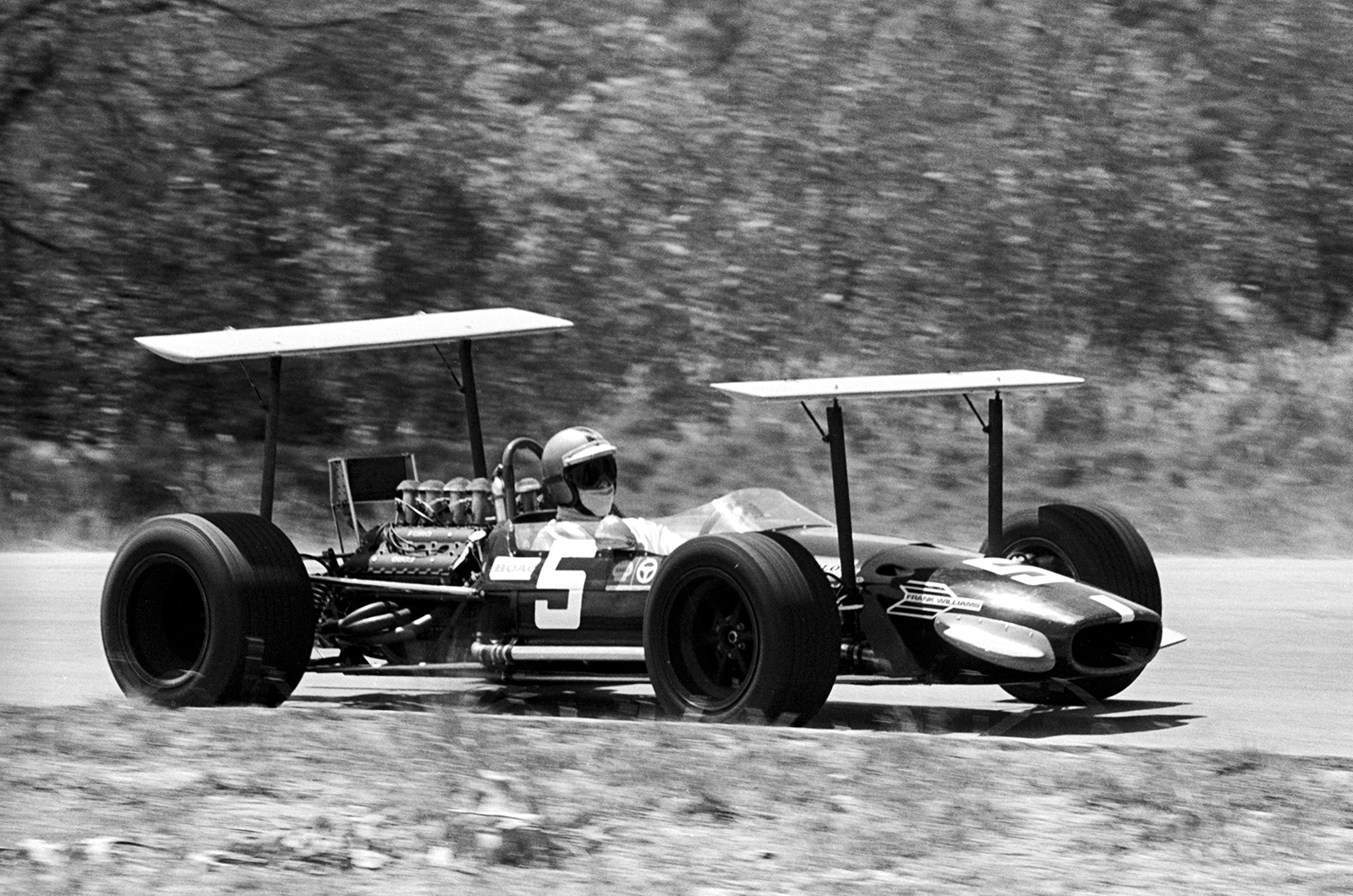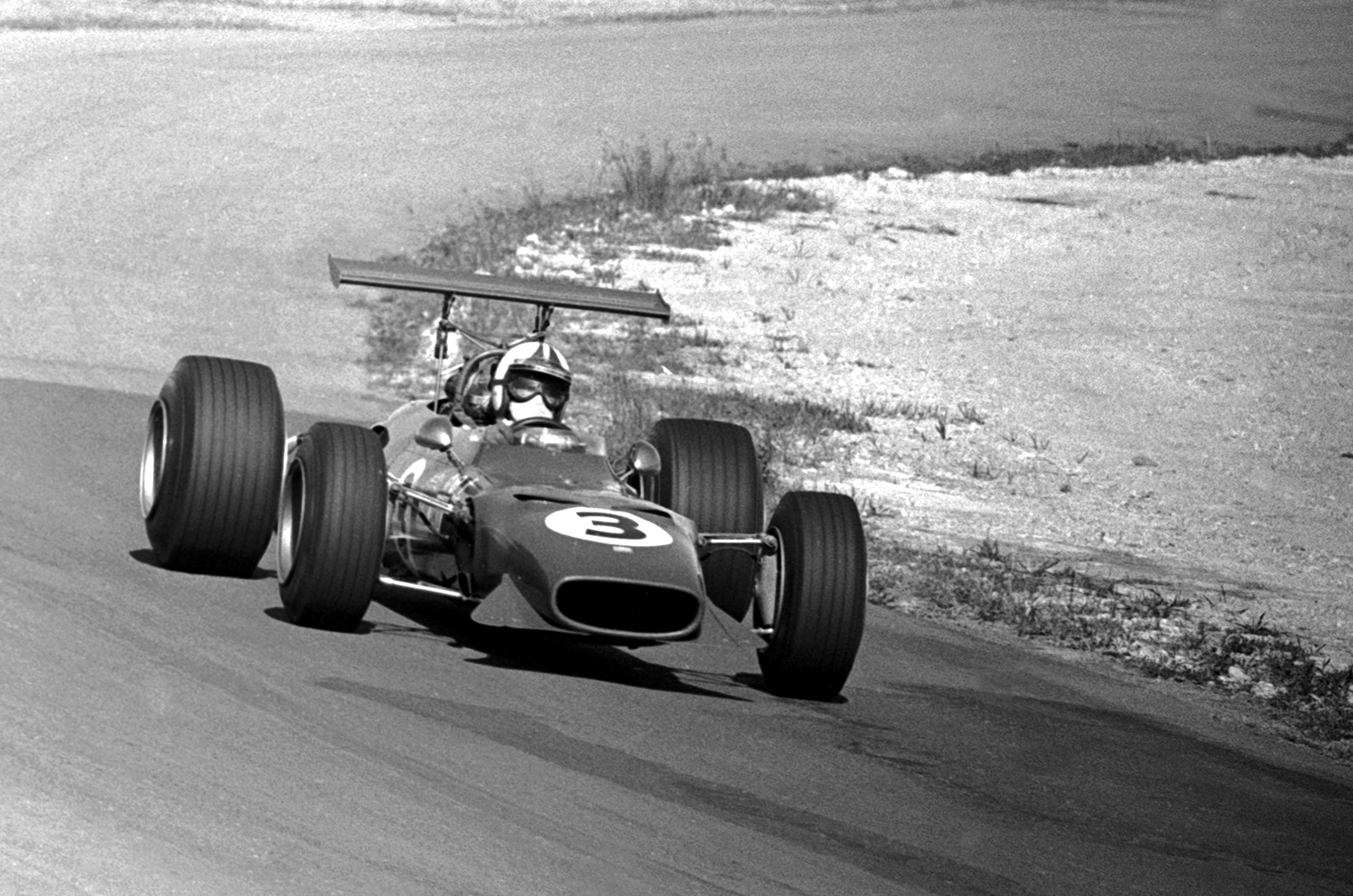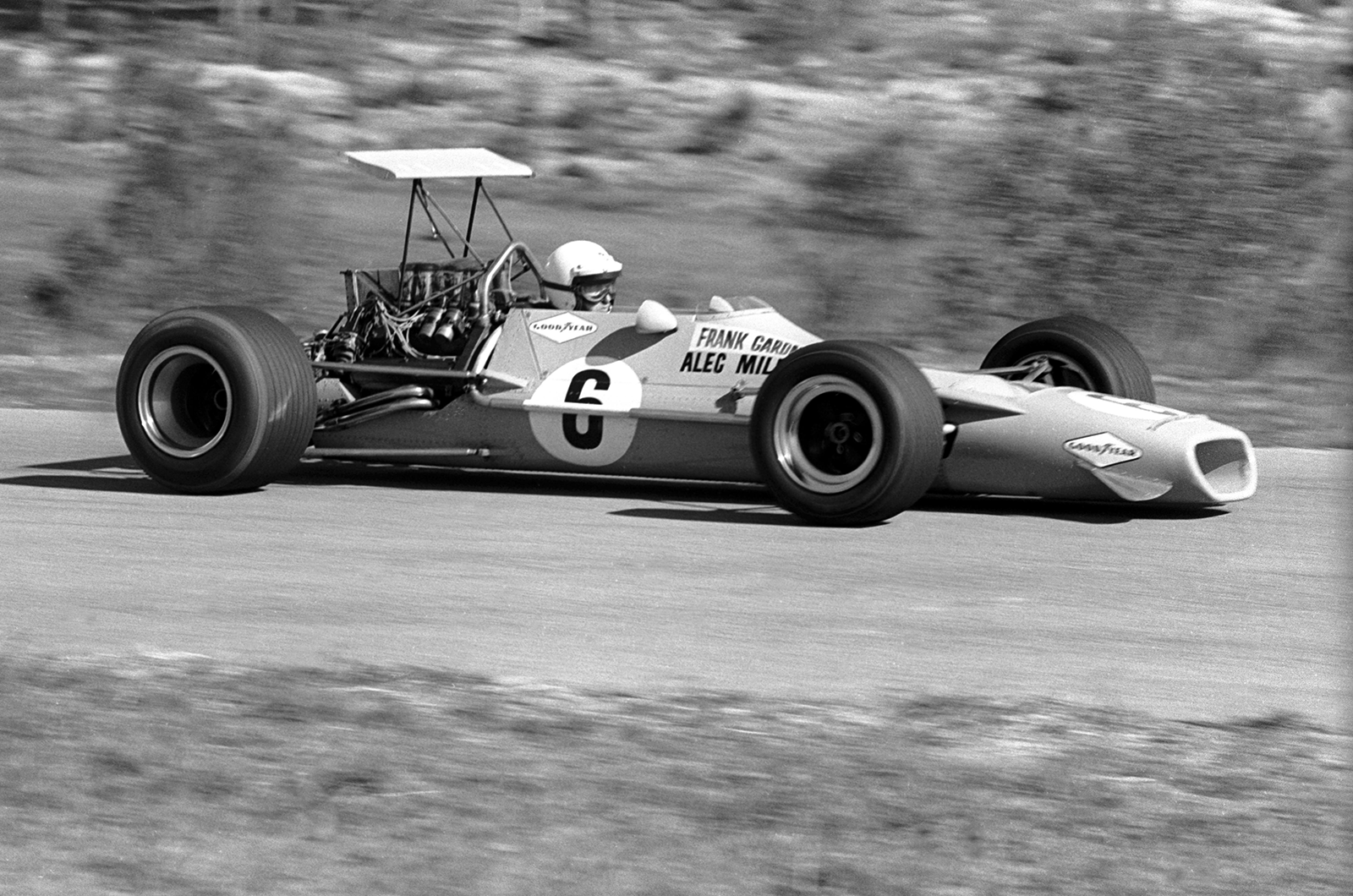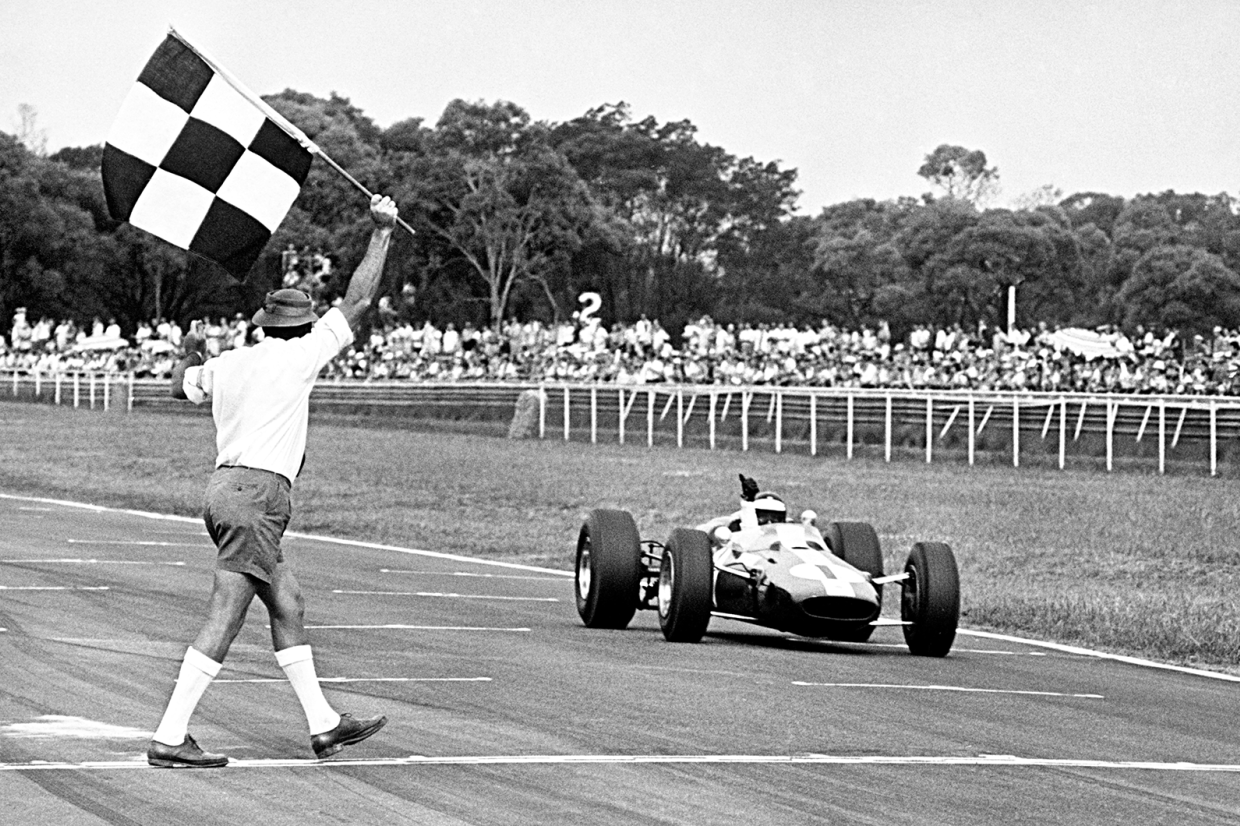
Another Formula One season has recently come to an end, and no doubt – to borrow a phrase from the late Clive James – the drivers will be returning to Monaco or Switzerland to ‘have candlelit dinners with their accountants’.
There was a time, however, when the end of the championship season did not mean the end of their racing.
Some would head for South Africa, others to the Temporada series in Argentina, but during the second half of the 1960s the most popular and highest-profile choice was the Tasman Series.
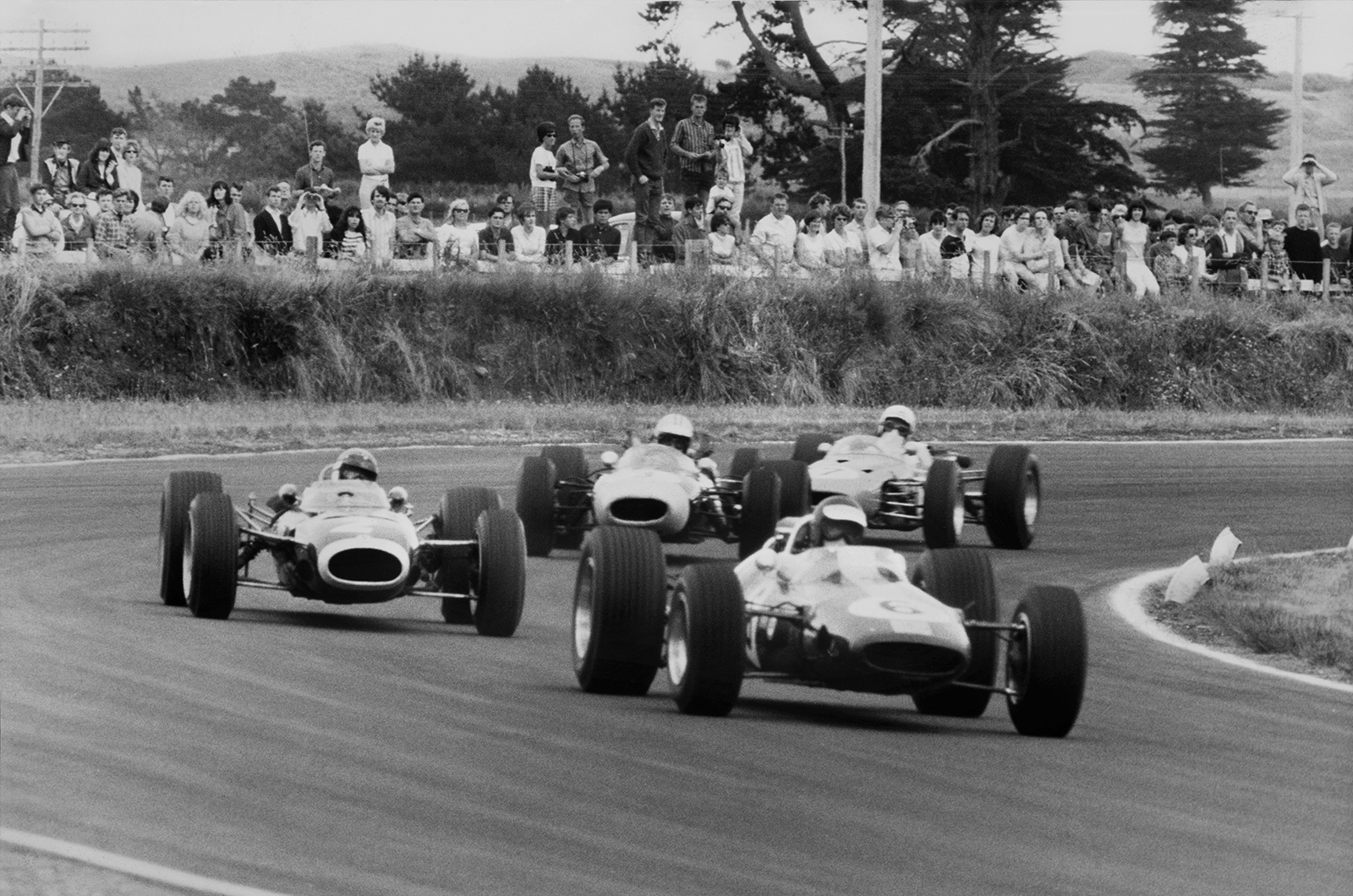
Clark (Lotus 33-Climax) leads Stewart (BRM P261) at Levin, New Zealand, on 14 January 1967
With a relaxed schedule of races in Australia and New Zealand, a hot climate to enjoy, and an all-pervading sense of off-season relaxation, the Tasman Series was a hit with the top drivers of the day.
No one would deny that it was serious competition – the list of champions includes Bruce McLaren, Jim Clark, Jackie Stewart and Chris Amon – but still it was a world away from the stresses and strains of the Grand Prix season.
Held at the height of summer in the Southern Hemisphere, it grew out of a collection of standalone races in Australia and New Zealand.

